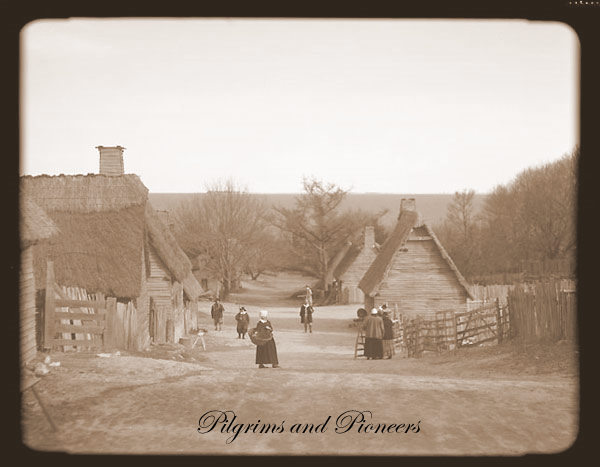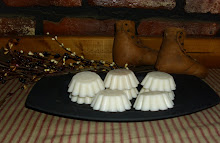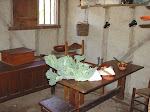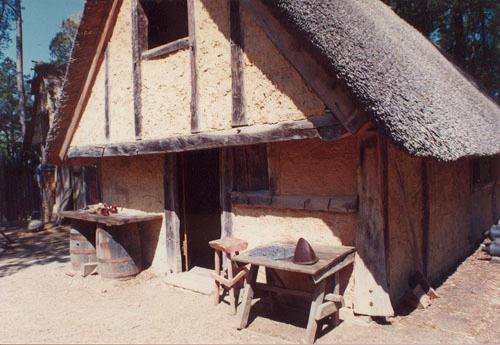Here are some facts and tips about aromatherapy and the use of Essential oils.
Aromatherapy-The use of therapeutic, aromatic pure essential oils.
Essential Oils- the volatile liquids that are distilled from plants, flowers, trees, friuts, and herbs.
Precautions for using Essential Oils- Do not use if you are pregnant, nursing, or plan to become pregnant.
If you suffer from any chronic health conditions particularily hypertension or epilepsy avoid the use of essential oils.
Keep out of the reach of children.
For external use only!
Do not use undiluted.
NEVER use- wormwood, rue, sasssafras, and mugwort- Rodale's book of herbs states that Mugwort has toxic properties & research on the web indicates that the other herbs have toxic properties also- thus they would not be suitable to use for Aromatherapy.
Citrus oils have about a 6 month shelf life- after the expiration of these oils do not use for Bath & Body products- instead add to mop water or in the laundry rinse cycle.
Some common essential oils used in Aromatherapy are: Lavender, Tea Tree Oil, Rosemary, Sweet Orange, Lemon, Bergamot, and Clary Sage.
Welcome To Pilgrims and Pioneers!
After many years of researching my family geneaology I have been lucky enough to discover actual information about my relatives that lived in the Pilgrim Era and the Pioneer Era- while many people also have realtives from those eras- many do not know their names or where they lived- actually seeing the proof in print makes you much more aware of who they really were.
After discovering these relatives it of course made me curious to learn more about the eras that they lived in and what their lives were like as, the history I learned in grade school had long since been forgotten.
I decided to start this blog for others who are also interested in these eras.
Some of the information here will be actual facts about my realtives and some will be information about the eras in general that I have found on the web.
I hope you will enjoy traveling back in time with me!
After discovering these relatives it of course made me curious to learn more about the eras that they lived in and what their lives were like as, the history I learned in grade school had long since been forgotten.
I decided to start this blog for others who are also interested in these eras.
Some of the information here will be actual facts about my realtives and some will be information about the eras in general that I have found on the web.
I hope you will enjoy traveling back in time with me!
Monday, March 31, 2008
Sunday, March 30, 2008
Grandma Sarah's Sawmill
Great Great Grandma Sarah Ellen Jones Dow

My Great Great Great grandmother Sarah Ellen Jones was born in 1838 in McDonough Co. Il to Parmenus Jones and Anne Dickerson. She came to Whiteside Co. Il when she was 14 years old, by covered wagon to live with her aunt Nancy Foy. I am assuming she was sent to live with her aunt because her mother had moved to Oklahoma in Indian Territory.
Sarah Ellen married Benjamin Franklin Dow and settled down in Yorktown to raise a family. To them 4 children were born- Pleasant Luther Dow, Lauer Dow, Zilla Adelle Dow ( my great great grandmother) and Glee Dow ( a son that died in infancy).
As a young wife and mother Sarah had to make tallow candles, homemade soap, quilts, and weave her own rugs all out of necessity. Store bought items were not readily available to her and she probably would have not had the money to buy them even if they were.
In her later years the family moved about 5 miles north to the town of Tampico, Il.
I am not sure of the date but I do know that Sarah Ellen was the owner of a sawmill in the state of Michigan and I have reason to believe that my grandmother Temple met my Grand father Arthur Pierceson( an employee of Sarah's at the sawmill) while visiting her grandmother Sarah at her sawmill.
About a year before she died at the age of 93 she was interviewed by the local newspaper The Tampico Tornado. During this interview she stated that when she left McDonough Co. there were no Indians but when she got to Whiteside Co. there were still Indians in the woods.
The photo on the right was taken in approximately 1897- Benjamin & Sarah Dow are the older couple seated - Sarah is the closest to the two small girls.
My great grandmother Zilla is the woman in the dark clothing( standing).
Saturday, March 29, 2008
I have been Tagged!
I have been tagged by Stephanie of http://www.primitive-folk-art.com/
Thanks for the tag Steph!
I am supposed to list 5 things about myself and then pass the tag on- so here goes!
1) I am an animal lover that would take in all of the strays in the world if it were possible.
2) I would like to travel back in time to see first hand how my ancestors lived.
3) I like to garden.
4) I plan to use herbs from my garden to create products for my website http://www.brandyannescandlesandprims.com/ soaps, milk baths etc.
5)I try to be kind, caring , and considerate every day as you never know what tomorrow will bring.
I am passing this tag onto:
Cindy of the Keeping Room
Prairie Prims and Nene's Crafting Corner
Rondell of Tomatoe Creek Prims
Thanks for the tag Steph!
I am supposed to list 5 things about myself and then pass the tag on- so here goes!
1) I am an animal lover that would take in all of the strays in the world if it were possible.
2) I would like to travel back in time to see first hand how my ancestors lived.
3) I like to garden.
4) I plan to use herbs from my garden to create products for my website http://www.brandyannescandlesandprims.com/ soaps, milk baths etc.
5)I try to be kind, caring , and considerate every day as you never know what tomorrow will bring.
I am passing this tag onto:
Cindy of the Keeping Room
Prairie Prims and Nene's Crafting Corner
Rondell of Tomatoe Creek Prims
Sunday, March 23, 2008
Quilting by Pilgrims and Pioneers

It may surprise you to learn that Colonial women did not quilt very much. This was for several reasons. One the colonial women that first came to America did not have much spare time- they often had large families that they had to cook for along with helping with many chores- sickness was very common in that era and tending to the sick family members often took a lot of the Colonial woman's time.
The rare exception to woman of that era making quilts was if they were well off enough to have hired help- this allowed them the time to quilt. Since the days were short and the nights long during the winter most quilting was done May through November.
Since imported print fabric was hard to come by most quilts were one piece of fabric for the top to which the precious print fabric they did have was used for appliques on this top.
Many coverlets were used as bed covering back then and records indicate that many woman prepared the fibers and then paid to have them woven into coverlets.
Bed rugs were another form of bed covering. Some were manufactured and some were homemade.
The most economical form of bed covering was coarse manufactured blankets.
Around 1840 the textile industry had gown enough that fabric was readily available to most families.
Pioneer woman migrating to the West knew that their woman friends and family probably would never be seen again. To help ease the pain of losing each other many friendship quilts were made and given to the pioneer woman that was leaving for the journey west.
As many quilts and hand tied comforters as possible were made for the westward journey- not only to use during the trip but to use in their new homes as the time to quilt would be very limited at first due to helping with all the tasks that came with clearing the land and building cabins- not to mention still doing all the cooking and child rearing and tending the the sick.
Mnay times quilts were used to cover windows and doorways in the log cabins or to partition off "rooms".
As time went on and the pioneers had the tasks of building their cabins done there was more time for the Pioneer women to do needlework and quilting became a popular way of socializing via quilting bees. Pioneer quilts were made from what ever fabric the pioneer women had- sometimes new but most of the time it was scraps of worn out clothing- dresses, shirts, and night clothes.
Wanting to follow in the footsteps of my Pilgrim& Pioneer grandmothers a few years ago I decided I would make a quilt. Pictured to the right is that quilt- my one and only finished quilt to date for as like my Pilgrim & Pioneer grandmothers there are just too many tasks to do in one day!
Saturday, March 22, 2008
Friday, March 21, 2008
Dyeing Easter Eggs the Natural Way
To color you eggs the natural way add the items listed below with 1 tablespoon of Vinegar to your water and boil for 20-30 minutes.
Coffee or tea will give a tan or brownish color
Yellow onion skins a yellow/tannish color
Red Onion skins a pink/purple color
Orange peels an orange/ yellow color
Lemon peels a yellow color
Beets a deep purple color
Grape juice a Lavender/purple color
Spinach a green color
Turmeric a yellow color
Blueberries a blue/purple color
Letting your eggs steep for awhile after boiling will deepen the color. The longer they set in the brew the darker your colors will be.
Coffee or tea will give a tan or brownish color
Yellow onion skins a yellow/tannish color
Red Onion skins a pink/purple color
Orange peels an orange/ yellow color
Lemon peels a yellow color
Beets a deep purple color
Grape juice a Lavender/purple color
Spinach a green color
Turmeric a yellow color
Blueberries a blue/purple color
Letting your eggs steep for awhile after boiling will deepen the color. The longer they set in the brew the darker your colors will be.
Thursday, March 20, 2008
Early Settler's Log Cabin

Pioneer Log cabin's were often small and cramped and very primitive. With that being said it created a warm and cozy togetherness for the families that lived inside.
Imagine your self sitting by the fire in an old wooden rocker in the cabin's great room. A braided rug under your feet, herbs drying on a rack on the wall, a pitcher and bowl to wash in sitting on the dry sink, and the wonderful smell of apples and cinnamon cooking in the big pot hanging in the fireplace! In this day of fast paced lives I long to Simplify!
The cabin in the photo is from Chaplin Creek a restored historic village in Franklin Grove, Il.
Monday, March 17, 2008
From Colonial Tallow Candles to Modern day Soy Candles

Back in the days of my colonial and pioneer ancestors making tallow candles was a frequent chore as without electricity candles were used to eat by, read by, quilt and sew by and anything else that required the use of light.
Burning tallow could be a smoky and unpleasant smelling experience- but as tallow was the only product available for candlemaking( I am not sure when beeswax started being used but it had to have been received with great joy!) it was something they had to endure.
Someday I will follow in their footsteps and attempt to make beeswax tapers, nubbies, and lamplighters . Nowdays we burn candles not out of necessity but to enhance our moods, recall fond memories, freshen the air or to add a cozy ambience to our homes. With the invention of soy wax, for now I am happy to follow in their candlemaking footsteps using soy -wax a much cleaner and better alternative to tallow! Soy wax burns clean, and slow with amazing scent throw.
Since I am a pioneer farm girl at heart I pour my candles in square mason canning style jars and make my melting tarts in fluted tins that make them resemble little food type tarts.
More recently I have added a Simpler Tymes line which are poured in farmhouse style panrty jars with black metal lids and the tarts made in a very plain and simple shape resembling little prairie cakes. Although I have poured these tarts in several colors in the near future they will be poured in natural off white or primitive tan.
My candles can be viewed at http://www.pilgrimsandpioneersprimitives.blogspot.com/
Burning tallow could be a smoky and unpleasant smelling experience- but as tallow was the only product available for candlemaking( I am not sure when beeswax started being used but it had to have been received with great joy!) it was something they had to endure.
Someday I will follow in their footsteps and attempt to make beeswax tapers, nubbies, and lamplighters . Nowdays we burn candles not out of necessity but to enhance our moods, recall fond memories, freshen the air or to add a cozy ambience to our homes. With the invention of soy wax, for now I am happy to follow in their candlemaking footsteps using soy -wax a much cleaner and better alternative to tallow! Soy wax burns clean, and slow with amazing scent throw.
Since I am a pioneer farm girl at heart I pour my candles in square mason canning style jars and make my melting tarts in fluted tins that make them resemble little food type tarts.
More recently I have added a Simpler Tymes line which are poured in farmhouse style panrty jars with black metal lids and the tarts made in a very plain and simple shape resembling little prairie cakes. Although I have poured these tarts in several colors in the near future they will be poured in natural off white or primitive tan.
My candles can be viewed at http://www.pilgrimsandpioneersprimitives.blogspot.com/
The Pioneer's Prairie Wildflowers

My Pioneer ancestors came from New England and the South to setttle New Trerritory in the wilds of the Illinois Prairie.
My gggrandparents found the land still wild & untamed. When my ggggrandfather Dow took his wheat to be milled he had to tie strips of rags onto the tree branches and tall foilage to find his way back home. Although there were uncleared timbered areas there was also beautiful long grasses that blew in the wind and over 175 species of wildflowers.
Illinios has several types of prairie soil depending on the region.
Northern Illinois where they settled is known as black soil Prairie or Grand Prairie named such because of the great fertility of the soil.
Some of the plants that can still be seen here today are Purple Coneflower, White Morning Glory, Prairie Phlox, and Prairie Snowdrops.
On the right is Purple Coneflower.
To see pictures of the other prairie flowers scroll down on this page.
Photos courtesy of Illiois wildflowers.info
Saturday, March 15, 2008
Skillet Cornbread
Skillet Cornbread
2 cups self rising cornmeal less 2 tablespoons
2 cups buttermilk
1 egg
1/4 cup shortening
Preheat oven to 400 degrees. Melt shortening in a 10 inch cast iron skillet.
Mix cornmeal, buttermilk and egg in a bowl- then add the melted shortening
and blend together. Pour mixture in the warm cast iron skillet and bake until
golden brown.
Recipe courtesy of Cades Cove.net
2 cups self rising cornmeal less 2 tablespoons
2 cups buttermilk
1 egg
1/4 cup shortening
Preheat oven to 400 degrees. Melt shortening in a 10 inch cast iron skillet.
Mix cornmeal, buttermilk and egg in a bowl- then add the melted shortening
and blend together. Pour mixture in the warm cast iron skillet and bake until
golden brown.
Recipe courtesy of Cades Cove.net
Covered Wagons

Traveling from East to West required the pioneers to travel with many things- clothing, food supplies, tools and some furniture- This required large wagons that would hold a lot of weight- sometimes several tons. Covered wagons were a way to transport their loads and ptrotect it from the elements.
The first covered wagon was designed in Pennsylvania and was called a Conestoga wagon. It's ends were angled and the floor sloped to the middle to prevent barrels from rolling out when going uphill or climbing mountains. Conestoga wagons were used the most by pioners traveling the Santa Fe trail.
Pioneers taveling the Oregon Trail found that these wagons were too heavy for their needs- many times killing the oxen that were trying to pull them before their destination was reached.
Thus a smaller wagon about half the size of the Conestoga was invented. These smaller wagons were called " Prairie Scooners".
Thursday, March 13, 2008
Indian Territory
Indian Territory was an area of land set aside for American Indians to be moved to when the US government took over the lands of the American Indians. Most of this land was in Oklahoma although I have read that part of Kansas was also in this Territory.
In the 1890's the land was opened up to white homesteaders which contributed to the great migrations of Pioneers to the West- many traveling by covered wagon.
Although I do not know exactly when my ggggrandmother Anne Dickerson went to Indian Territory with her third husband Ladovic Underhill I have found information that he died in Waldron,Ponotoc Co. , Oklahoma in 1897 at the age of 77 and the she passed away in Oklahoma in the year 1898 at the age of 80 years old.
In the 1890's the land was opened up to white homesteaders which contributed to the great migrations of Pioneers to the West- many traveling by covered wagon.
Although I do not know exactly when my ggggrandmother Anne Dickerson went to Indian Territory with her third husband Ladovic Underhill I have found information that he died in Waldron,Ponotoc Co. , Oklahoma in 1897 at the age of 77 and the she passed away in Oklahoma in the year 1898 at the age of 80 years old.
Monday, March 10, 2008
The Beauty Of Spring!
 For the past two weeks I have had a whopping case of cabin fever! I so miss warm weather and being outside!
For the past two weeks I have had a whopping case of cabin fever! I so miss warm weather and being outside!Tonight I ran across this picture of my aunt's garden taken last year.
She has a true green thumb- her pilgrim & pioneer heritage is proven here!
Hope this brings a little spring into your life too!
Enjoy!!
Sunday, March 9, 2008
Herbal Bath Tea Recipe
In the olden days women did not have access to fancy store bought bath & body products so the made their own!
Here is a simple bath tea recipe to help you unwind at the end of the day!
Calming Bath Tea
2 parts Lavender
2 parts Epsom salts
2 parts rose petals
1 part chamomile
Mix ingredients together and place in a small muslin drawstring bag- add bag to your bath and relax!
Here is a simple bath tea recipe to help you unwind at the end of the day!
Calming Bath Tea
2 parts Lavender
2 parts Epsom salts
2 parts rose petals
1 part chamomile
Mix ingredients together and place in a small muslin drawstring bag- add bag to your bath and relax!
Thursday, March 6, 2008
Parched Corn
Parched corn was a dietary staple for both the Indians and the settlers- I have even heard it goes back to biblical times.
The Indians dry roasted their parched corn while the settlers oil roasted or fried the kernels.
Parched corn is still eaten today by a number of hikers as it is easy to carry and prepare at their campsites.
Corn can be fully dried on the cob or frozen corn can be dehydrated. To use put a small amount of cooking oil in a skillet then wipe it out leaving only enough oil to coat the skillet and keep the corn from burning.Pour in enough dry corn to cover the bottom of the skillet. Stir constantly to keep it from burning.The kernels are done when they swell and turn light to medium brown and start to pop. Usually takes one to five minutes.
The Indians dry roasted their parched corn while the settlers oil roasted or fried the kernels.
Parched corn is still eaten today by a number of hikers as it is easy to carry and prepare at their campsites.
Corn can be fully dried on the cob or frozen corn can be dehydrated. To use put a small amount of cooking oil in a skillet then wipe it out leaving only enough oil to coat the skillet and keep the corn from burning.Pour in enough dry corn to cover the bottom of the skillet. Stir constantly to keep it from burning.The kernels are done when they swell and turn light to medium brown and start to pop. Usually takes one to five minutes.
Monday, March 3, 2008
Recipe from the Pilgrim days- Stewed Pompion ( Pumpkin)
The Ancient New England standing dish.But the Housewives manner is to slice them when ripe, and cut them into dice, and so fill a pot with them of two or three Gallons, and stew them upon a gentle fire a whole day, and as they sink, they fill again with fresh Pompions, not putting any liquor to them; and when it is stew'd enough, it will look like bak'd Apples; this they Dish, putting Butter to it, and a little Vinegar, (with some Spice, as Ginger, &c.) which makes it tart like an Apple, and so serve it up to be eaten with Fish or Flesh: It provokes Urine extreamly and is very windy.Notes about the recipe:The English people in the 1600's called all pumpkins and squash “pompions.”Back in John Josselyn's time there was no such thing as a spelling test! People who could write spelled words any way they liked.
Just like today, in the 1600's English people knew that that some foods had an effect on the human body. John Josselyn says at the end of this recipe that this food provokes urine and causes gas (windy)!This is the same recipe written in a modern style to try at home. Adults will need to help with this recipe.A Dish of Stewed Pompion
4 cups of cooked squash, roughly mashed
3 tablespoons butter
2 to 3 teaspoons cider vinegar
1 or 2 teaspoons ground ginger
1/2 teaspoon salt-In a saucepan over medium heat, stir and heat all the ingredients together. Adjust seasonings to taste, and serve hot.
Plimoth for Kids
COLORING PICTURES
Downloadable picture files that you can print and color.
RECIPES
Impress friends, parents and teachers with these recipes from the past.
http://www.plimoth.org/kids/make.php
Who needs videos? Make your own fun, 17th-Century style!
STORIES
Tales form a Wampanoag and Colonial kid's perspective.
TALK LIKE A "PILGRIM"
Grandma's, Grandma's, Grandma's, Grandma might have talked like this!
HOMEWORK HELP
Enough stuff to fill up a whole bunch of reports.
Just like today, in the 1600's English people knew that that some foods had an effect on the human body. John Josselyn says at the end of this recipe that this food provokes urine and causes gas (windy)!This is the same recipe written in a modern style to try at home. Adults will need to help with this recipe.A Dish of Stewed Pompion
4 cups of cooked squash, roughly mashed
3 tablespoons butter
2 to 3 teaspoons cider vinegar
1 or 2 teaspoons ground ginger
1/2 teaspoon salt-In a saucepan over medium heat, stir and heat all the ingredients together. Adjust seasonings to taste, and serve hot.
Plimoth for Kids
COLORING PICTURES
Downloadable picture files that you can print and color.
RECIPES
Impress friends, parents and teachers with these recipes from the past.
http://www.plimoth.org/kids/make.php
Who needs videos? Make your own fun, 17th-Century style!
STORIES
Tales form a Wampanoag and Colonial kid's perspective.
TALK LIKE A "PILGRIM"
Grandma's, Grandma's, Grandma's, Grandma might have talked like this!
HOMEWORK HELP
Enough stuff to fill up a whole bunch of reports.
Sunday, March 2, 2008
Anne Dickerson - Indian Territory
Following the path of the descendents of Robert Adams and Mourning Lewis my 3rd great grandmother was Anne Dickerson. She was born in Kentucky and married Parmenus Jones to which my gggrandmother Sarah Jones Dow( More about her later) was born.
Anne Dickerson was a very adventerous woman. She would be married three times in her adult life. After Parmenus Jones died she then married a man by the name of Paterson Aber. He too passsed away( there are family jokes that make reference that she must have been a bad cook!) and she then married Ladovic Underhill.
Ladovic and Anne's stepson Emmet were both Civil war veterans joining in Illinois when they lived in Yorktown( Illinois) Emmet is buried in Erie, Il with a civil war monument- although I have yet to go see it.
This is where her life takes a very interesting twist. She and husband Ladovic migrated to Indian Territory in Oklahoma were they both passed away. They are both buried there.
I have no idea why they went there leaving their families behind. Perhaps they had heard there was money to be made there - the truth is I will never know.
Anne is the start of my pioneer connection in this world and I admire the courage she had!
Anne Dickerson was a very adventerous woman. She would be married three times in her adult life. After Parmenus Jones died she then married a man by the name of Paterson Aber. He too passsed away( there are family jokes that make reference that she must have been a bad cook!) and she then married Ladovic Underhill.
Ladovic and Anne's stepson Emmet were both Civil war veterans joining in Illinois when they lived in Yorktown( Illinois) Emmet is buried in Erie, Il with a civil war monument- although I have yet to go see it.
This is where her life takes a very interesting twist. She and husband Ladovic migrated to Indian Territory in Oklahoma were they both passed away. They are both buried there.
I have no idea why they went there leaving their families behind. Perhaps they had heard there was money to be made there - the truth is I will never know.
Anne is the start of my pioneer connection in this world and I admire the courage she had!
Saturday, March 1, 2008
The story of Penny Rugs
Going back to the 19th century it is belived that penny rugs were made as a way of using up remnants of used woolen clothing that was not big enough to cut into strips for rug hooking.
The term "penny rug" came to be because of using coins of that era as templates for the "pennies". On older penny rugs the circles were stitched onto feed sacks or pieces of burlap.
Not all penny rugs were made up of circles- there are many that are wool applique scenes, fruits, animals and many other scenes.
Many penny rugs were made with decorative edging pieces in elongated pieces of wool that resembled " tongues" or "lamb's ears".
Penny rugs in the early days were not used on the floor but rather used on beds for warmth or to decorate table tops or hearths and mantles.
The term "penny rug" came to be because of using coins of that era as templates for the "pennies". On older penny rugs the circles were stitched onto feed sacks or pieces of burlap.
Not all penny rugs were made up of circles- there are many that are wool applique scenes, fruits, animals and many other scenes.
Many penny rugs were made with decorative edging pieces in elongated pieces of wool that resembled " tongues" or "lamb's ears".
Penny rugs in the early days were not used on the floor but rather used on beds for warmth or to decorate table tops or hearths and mantles.
Subscribe to:
Comments (Atom)
Prairie Wild Morning Glory

Prairie Phlox

Prairie Sundrops

The Famous Rock!
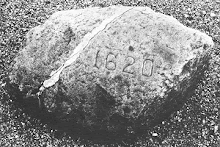
Plymouth Rock dated 1620
Plimoth Plantation
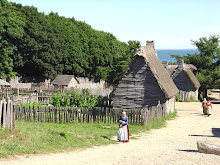
The Village
Plimoth Plantation

A Keeping Room
